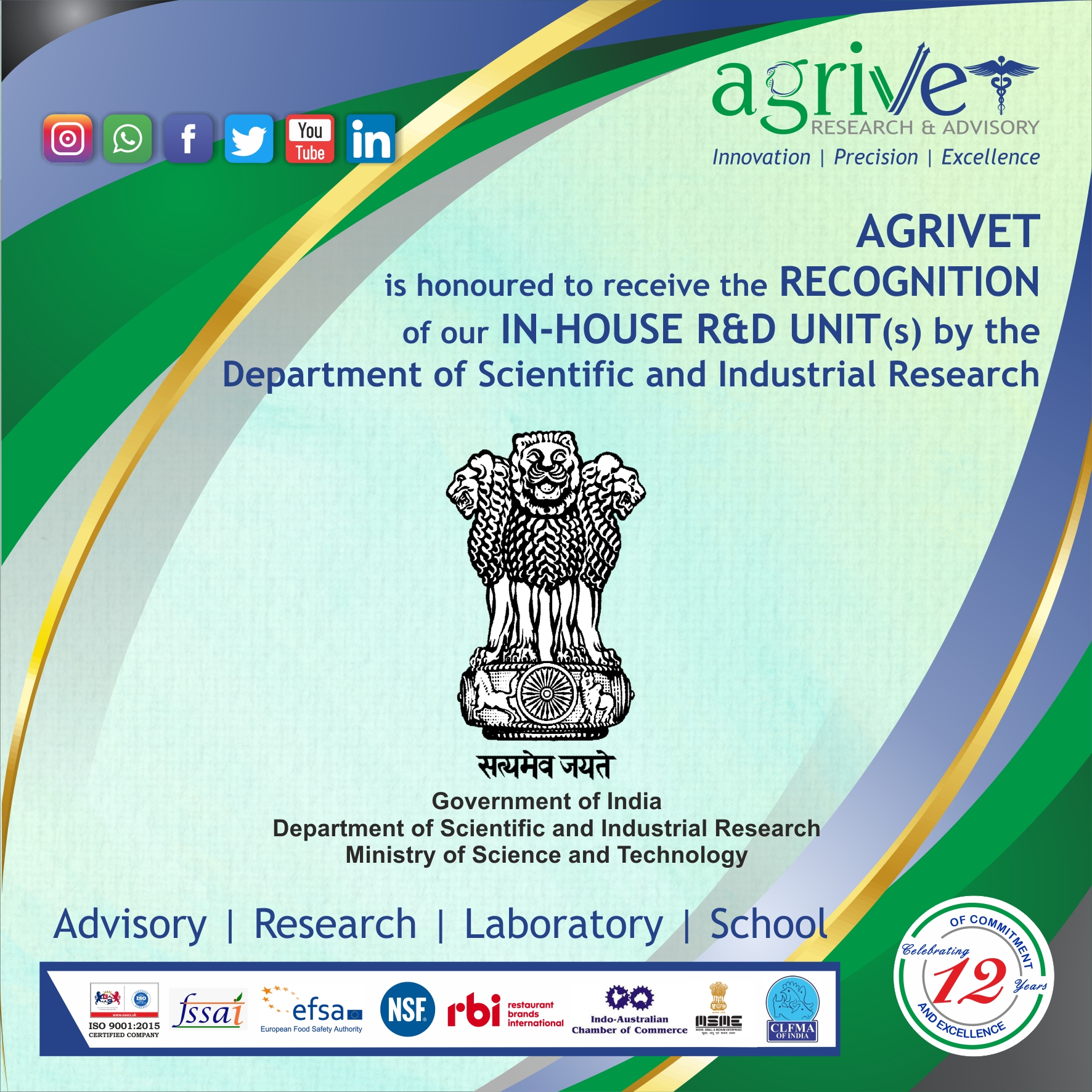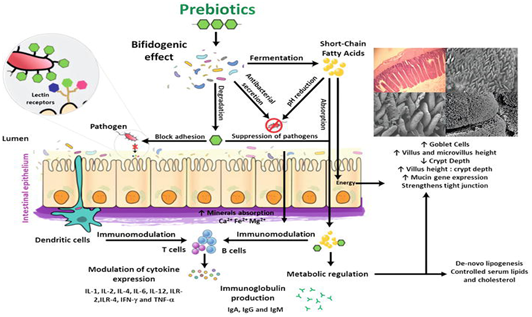
Recently, commercial uses for feed additives that can influence the gastrointestinal system of poultry and improve their performance have drawn increased attention. Such dietary supplements are economically advantageous because they may directly assist poultry farmers by lowering farm animal death rates, boosting bird development rates, and enhancing feed efficiency. They can also reduce the spread of foodborne pathogens in flocks of birds by altering the microbial population in the gastrointestinal tract. Additionally, the ban on the use of antibiotics in chicken production as well as other rising trends, like the expansion of organic products, have compelled poultry farmers to develop workable substitutes that offer advantages comparable to antibiotics. Many particular substitutes have been tested and commercialized as a result, including enzymes, prebiotics, probiotics, organic acids, dietary fibre, herbs, spices, essential oils, etc.
Among all the available alternatives, prebiotics has emerged as one of the most promising solutions for the poultry industry. Prebiotics also referred to as non-digestible carbohydrate compounds, confer a health benefit on the host animal by selectively promoting the growth, metabolism, and composition of beneficial native bacteria in the GIT while eradicating the pathogenic ones. The health benefits of prebiotics include improvements in productive parameters such as egg production, body weight gain, feed conversion ratio, and mortality index. Besides improved host health and productivity, prebiotics have also proven their efficacy to reduce colonization of important pathogens both for poultry production and public health, such as Salmonella, Campylobacter, C. perfringens, and E. coli
There are two main probable modes of action. First, the prebiotic passes through the upper gastrointestinal tract of the chicken without being digested. Therefore, these compounds are not utilized by the host animal but can serve as substrates by particular bacteria such as bifidobacteria and lactic acid bacteria.Second, the presence of prebiotics causes additional gut activities, such as the production of lactic acid and short-chain fatty acids as by-products of microbial fermentation. These two actions slow the rate of pathogen colonization in poultry gut.
 Figure: Mechanisms of action of prebiotics in poultry (Taken from Bruno Solis-Cruzet al., 2019).
Figure: Mechanisms of action of prebiotics in poultry (Taken from Bruno Solis-Cruzet al., 2019).
Prior to now, prebiotic candidates were only thought to be carbohydrate-based substances like nondigestible oligosaccharides and non-starch polysaccharides; however, the prebiotic concept has since been expanded to include "a substrate that is selectively utilized by host microorganisms conferring a health benefit." Nondigestible oligosaccharides, such as fructooligosaccharides and inulin-type, mannan oligosaccharides, xylooligosaccharides, galactooligosaccharides, and isomaltooligosaccharides, as well as some structural carbohydrate elements of non-starch polysaccharides, like -glucan, are the prebiotics that is most frequently used in poultry diet. It is being investigated to see if new non-digestible oligosaccharide sources, including cereal grain brans, may be used in chickens’diets as prebiotics.
Alternative feed supplements are becoming more popular as the normal use of antibiotics in poultry production declines. Prebiotics come in a variety of forms and provide a mechanism to alter the gut flora for the benefit of the bird in many different ways. To fully comprehend the prebiotics and maximise their positive effects, however, a lot of research is still needed. Finally, finding new prebiotic sources and perfecting their use in poultry continue to be top priorities. In conclusion, the future of prebiotic development for the benefit of poultry production appears to offer numerous opportunities for discovering novel sources and optimizing the efficacy of those compounds currently in use.